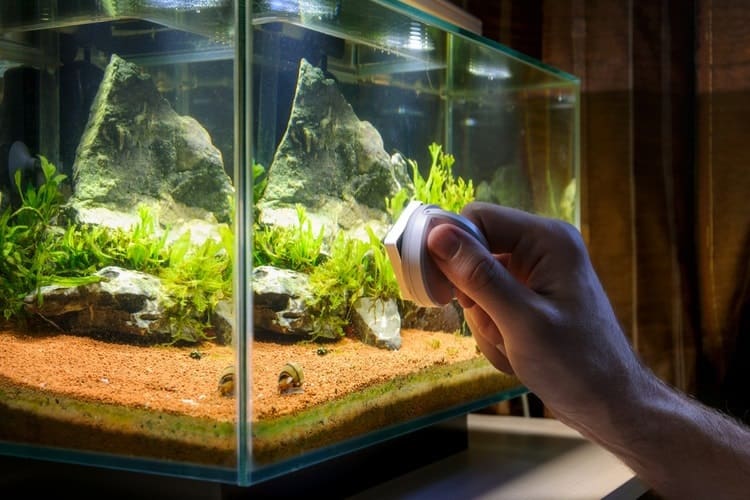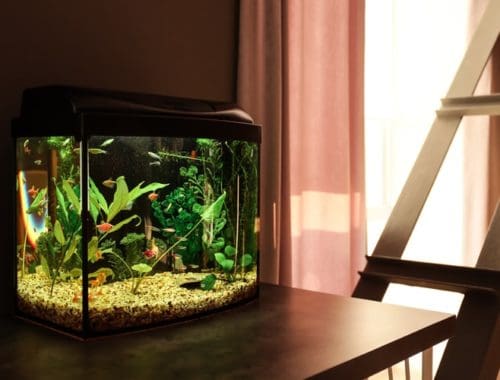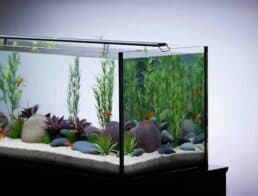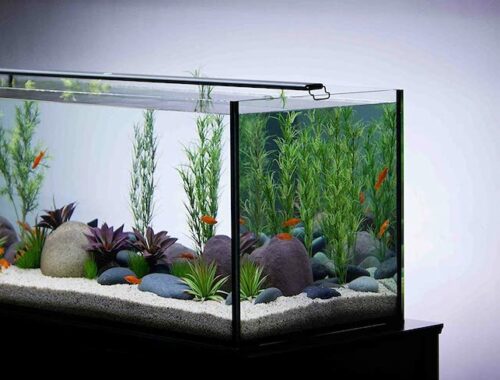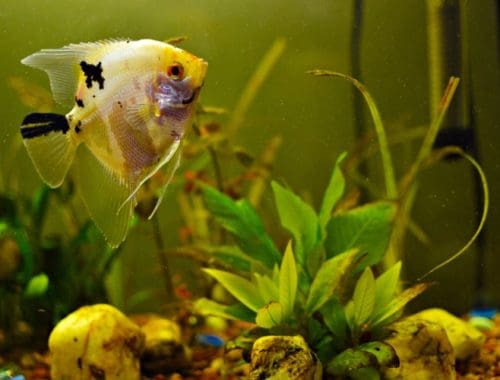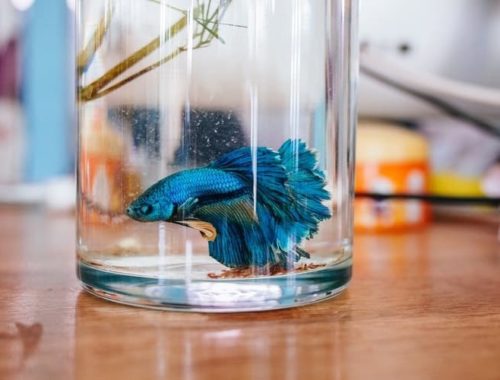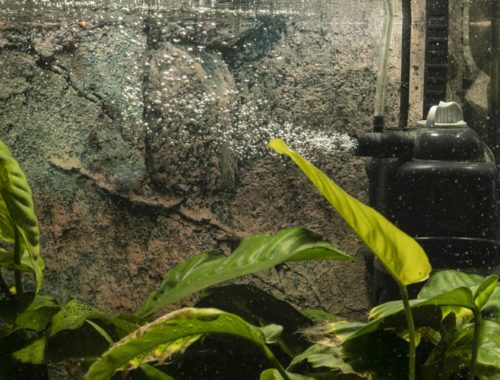Cleaning your aquarium is a big part of your responsibility as a fish owner. Keeping the water at the proper temperature and the tank properly cleaned is key to healthy, happy fish. There are plenty of differences between saltwater and freshwater fish, but in terms of cleaning their habitat, there are a few basics you’ll need to do, no matter what kind of fish tank you have.
1. Gather Supplies
Before beginning, you’ll want to make sure you have all the supplies you’ll need for a thorough cleaning. You’ll need a bucket to dump the water you want to replace, a gravel siphon, a scrub tool, an algae pad, a filter (or refill cartridges), and an aquarium glass cleaner (or a vinegar/water solution). 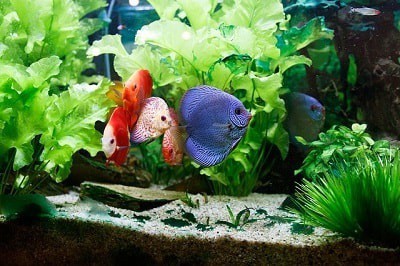
To make sure your aquarium remains fish-safe, don’t recycle your bucket for cleaning or gardening. Use a bucket that’s designated specifically for aquarium cleaning. The same goes for all fish tank cleaning supplies: Use them exclusively for cleaning the fish tank to prevent contamination.
2. Scrub the Sides of the Tank
The first thing you’ll want to do will be scrub the sides. You can do this before or after removing the water, but we recommend it before so the siphon will be able to pick up more algae. If you choose to do so, be sure your hands and arms are clean and free of soaps or chemicals. Running it along the glass, use an algae scrubber to loosen the residue off of the sides of the tank.
If you find a particularly stubborn patch of algae, then use a blade of some kind. A razor blade could work, or they have plastic blades specifically made for these hard-to-scrub places. There’s a good starter kit available that has a good brush and scraper.
3. Change Out Water As Is Appropriate
Once you’ve scrubbed the algae free from the sides of the tank, you’ll want to siphon out the water. In doing so, you’ll likely be able to use the gravel siphon as a vacuum and grab a bunch of that freed up algae to maximize your cleaning. You should clean your tank about once a week, and while that may seem daunting, once you get into the habit, it will become second nature.
If you have healthy fish, you’ll want to replace 10%-20% each week. If your fish don’t look as healthy (i.e., they’re sideways or upside down, their fins are tucked in, or they’re just especially inactive), then you’ll want to replace 25-50% each week. Note that you want to pull out the percentage of the water that is actually there, not the water that should be there. Water evaporates, but the mineral deposits and contaminants do not. So remove the 10%-20% or 25%-50% of what remains and then fill it.
Check out our list of the Best Betta Fish Tanks for some easy-to-clean tank options.
4. Clean Gravel and Decor
Cleaning the gravel should be easy; simply use the siphon and aim it directly over the gravel as it pulls the water out. This way you’ll have an active role while draining the water and you won’t lose track of how much is coming out and how fast. If you find the decorations and rocks are too covered in algae for you to clean while you drain the 10%-20%, you may be feeding your fish too much or not cleaning your tank often enough.
To clean the decor, you can use your gravel siphon, but if you find there is more stubborn residue on the decorations, you may want to pull it out and clean it by soaking it in a 10% bleach solution for 15 minutes. Be sure to thoroughly clean it before putting it back in the tank. You’ll want to do this by pouring boiling water over it and letting them air dry.
5. Replace Water
It may seem obvious, but you’ll want to resist using the purified water that you buy from a grocer for refilling your aquarium. There are minerals in tap water that have been filtered out of the purified. The day before a cleaning a freshwater tank, leave the amount of water you want to put back in uncovered and the chlorine will evaporate overnight. Room temperature water is typically too hot for freshwater fish so store it in a cool place. You may want to consider adding freshwater aquarium salt to the water to help prevent diseases in your fish. Salt water can be purchased at your local pet store or made at home.
Before you add the water, make sure the tank and the new water are the same temperature. You’ll be able to tell differences with your hand, but a thermometer is the safest bet. If you place the water in a bucket and put it above the tank, you can use the siphon to ease the water back in without messing up your aquarium decor.
6. Maintain Cleanliness
To maintain the cleanliness of your tank, you’ll want to replace the filter (or the cartridges within your filter) frequently. Always refer to your filter’s guidelines for how frequently to change, but generally, you’ll need to change the cartridge about once a month. Keep in mind that even though you can rinse a filter during your weekly cleaning to remove some build up, it does not extend its life. You’ll also want to clean the exterior of the tank using an aquarium safe glass cleaner or make your own vinegar/water solution.
Keeping your fish’s tank clean will help you extend their lives and keep them healthy. It’s hard to develop an attachment with a pet you can’t pet or play with, but if you have any interest in doing so, then weekly cleanings will give you an opportunity to interact with them, and they can become more like family members and less like decorations to your home.


